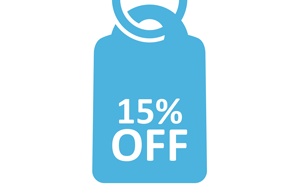Independent retailers have struggled against proliferating online and brick-and-mortar competition for years. The pandemic only heightened the unpredictability of the fast-changing customer, competitor and shopper behaviors, as well as supply chain disruptions.
The Imperative for Science-Driven Pricing and Promotions
Fortunately, indie retailers continue to adopt science-based lifecycle pricing (which includes prices, promotions and markdowns) to sort through the overwhelming data and separate the signal from the noise and hone in on accurate demand signals. These systems, which have manageable up-front costs with their cloud-based hosting model, make price and promotion recommendations to enhance margins and profits while aligning to category roles, strategies and financial objectives.
A high-return area of focus is private-label items. Traditionally, shoppers had definite national brand preferences and were skeptical about private labels delivering equivalent quality. The pandemic has caused a change of heart, as newly price-sensitive shoppers turned to private-label items with a more open mind.
A global shopper study conducted earlier in 2020 showed that a surprising 43 percent of shoppers are very likely to purchase private labels over a national brand during the pandemic, and 44 percent plan to remain loyal to private labels in the future, and post-COVID. A similar and more recent shopper study, which also polled shoppers in the U.S., Brazil, France, Germany, and the UK, uncovered even more dramatic results that underscore how radically shopper perceptions of private labels have evolved: 80 percent of shoppers see private labels as being of similar or higher quality than national brands. The March 2021 survey found that 17 percent of shoppers think private labels are much higher quality than national brands, while only 4 percent think private brands are much higher-quality.
Capitalize on Change
It is a golden opportunity for small businesses to strategically revisit their traditional margin-rich private-label offerings. Retailers can harness advanced science-driven pricing technologies to identify when pricing strategies should be adjusted. The science also identifies when an item has shifted to center-stage — when it becomes a Key Value Item and its pricing should be prioritized.
Another important dimension in thinking about private labels is channel. It is well-understood by now that the pandemic drove even shoppers who traditionally were resistant to change into online channels. Today, more than one-in-three (35%) of shoppers say they primarily shop online, versus 7 percent pre-pandemic — a five-fold increase. Price science shows price sensitivity and competitive elasticity, which vary by channel, down to the item level, both online and in-store. Along with the ability to rapidly change prices in their growing online channels, retailers can leverage dynamic pricing to ensure they offer relevant prices for private labels and beyond, keeping up with the pace of change in shoppers’ expectations.
Promotion Preferences are also Evolving Rapidly
Understanding cross-item affinity and cannibalization effects is critically important when considering promotions for private-label items. Knowing what promotions resonate with your customers, including the right vehicle and the right offer, enables retailers to attract shoppers to their destination with targeted, relevant offers.
It is fundamental for AI-based price science to carefully target prices and promotions in order to drive halo items that increase overall basket as well as avoid inadvertently undercutting more margin-rich items with cannibalization. Once again, pricing aggressively on the promoted item is sustainable in the overall context of knowing how to recover margin elsewhere, including affinity items, to meet target business goals.
Getting promotions right for private labels is critical, especially since the cost of these promotions is not offset by vendor funds. The global shopper study found that promotions are more important to shoppers now than they were pre-COVID. Before the pandemic, 34 percent of shoppers said they were extremely or very likely to wait for a promotional offer before making a purchase, which ticked up slightly to 35 percent during COVID.
A resounding 45 percent of respondents reported that, post-COVID, they will be extremely or very likely to wait for a promotional offer, while only 22 percent say they are not at all or not very likely to wait. Since most shoppers are not going to buy at regular prices and will instead wait for the right promotional discount, you need to ensure that you deliver the right offer to them before your competitors.
While historically, shoppers have had a strong preference for dollars-off or percent-off promotions, their current top preference is Buy-One-Get-One (BOGO). Fifty-four percent of shoppers prefer BOGO to dollars-off (52%) or percent-off (48%). Retailers can tap promotion optimization software to stay current with shoppers’ changing promotional preferences in order to ensure they offer the most relevant promotions and types at the right price, while also meeting their business goals.
Small businesses who continue to conduct pricing and promotions “the way we’ve always done it” risk being crushed by more agile, data-driven competitors leveraging science-based price and promotion optimization. For those retailers who have not yet made this strategic shift, it is imperative to use this opportunity to refresh your pricing and promotional strategies, strengthening your foundation with automated, real-time pricing and promotion capabilities that enable you to remain relevant to your shoppers, and sustain healthy business results in what will surely remain a fast-changing landscape.
Cheryl Sullivan is the President and General Manager of DemandTec, a lifestyle pricing solution provider for retailers.

